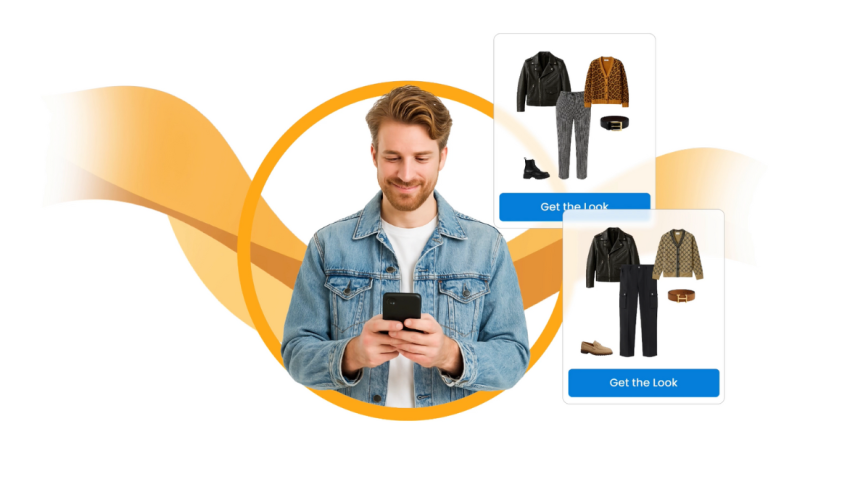Online shoppers often look for convenience and value. When online consumers are required to click through many pages to discover complementary products, they can become fatigued. When they do not see the benefits of purchasing more than one product, they will generally only purchase what they set out to buy in the first place. This can limit customer satisfaction, as well as the organization’s profit potential. In terms of business, the goal is simple: to increase average order value (AOV) while not damaging the customer’s experience.
This is where product bundling comes into play. Bundling similar products can be an effective way of demonstrating to customers that they are getting value at the correct time and price while also driving sales. Retailers can now develop the ideal personalized product bundles to suit customer behavior while influencing larger purchases.
1. Bundle Based on Customer Behavior
Customers do not shop in the same way. Some will buy just what they need, while others want to do their grocery shopping in one shopping trip, perhaps in one order or even in one shipment of product. Understanding the way someone browses and buys can be key to creating intelligent product bundles that match what they are looking for.
If a shopper adds a laptop to their cart, a suggested product bundle of a laptop bag and laptop mouse makes the customer’s buying experience easier. Past purchases, browsers, frequently bought-together products, or new customer exploration can be used to identify personalized product bundles that naturally flow together, not feel like you are forcing them into something they do not want.
This type of advanced bundling not only increases the chance of higher sales but also builds trust. The more helpful the personalized product bundles, the more likely a customer will return.
2. Mix High-Demand and Low-Moving Items
One of the smartest ways to boost AOV and manage inventory is by bundling bestsellers with slower-moving products. This helps in two ways: it clears shelf space and increases the value of each purchase.
For example, a popular skincare item can be bundled with a lesser-known serum or cleanser. The main product grabs attention, and the add-on gets noticed because of it. This strategy is useful during sales periods or when launching a new product that needs more visibility.
When done well, it turns a tough sell into a win-win deal—the customer gets more for their money, and the business moves more products.
3. Use Time-Limited or Seasonal Bundles
People often buy quickly when they’re afraid of missing out. Limited-time or seasonal bundles can tap into this mindset and create excitement.
Think of holiday kits, back-to-school packs, or summer special combos. These bundles are designed around events or seasons, making them timely and more appealing. For example, a “Work from Home Essentials” bundle during the back-to-school season could include headphones, a mouse pad, and a desk organizer.
This advanced bundling encourages faster decisions and pushes up AOV because shoppers are more likely to buy multiple items in one go rather than wait and miss out on the deal.
4. Offer Custom Bundle Options
Sometimes, fixed product bundles may not work for every shopper. Giving customers the ability to build their own bundle within a selection can be a powerful tool.
For instance, if you run a pet store, you can allow customers to pick any three items from a list of ten pet care products at a discounted bundle price. This feels more flexible and gives a sense of control while still nudging customers to buy more.
This strategy offers both variety and good value. It’s also an easy way to encourage customers to explore more items they might not have considered buying otherwise.
5. Keep Pricing Transparent and Value-Driven
The key to successful advanced bundling lies in how clearly you communicate the value. If customers can instantly see how much they save by buying a bundle instead of individual items, the offer becomes more tempting.
For example, instead of just saying “Bundle Price: ₹999,” highlight the savings: “Worth ₹1,299—Save ₹300!” This small detail makes a big difference. The idea isn’t just to bundle—it’s to create bundles that feel like a smart deal.
Also, make sure the price makes sense. Too steep, and customers may avoid it. Too low, and it might undervalue the product. Strike the right balance so that both value and quality are clear.
Bottom Line
Creating effective personalized product bundles is more than just grouping products. It’s about offering convenience, relevance, and real value to customers while boosting your AOV. Whether you’re using customer behavior, inventory data, or seasonal events to drive bundling decisions, the key is to keep it simple and customer-first.
With solutions like Ensemble AI, retailers can take bundling to the next level through advanced bundling techniques. These tools help create personalized product bundles that fit the right audience at the right time, turning browsers into buyers and one-time buyers into loyal customers.
Lynn Martelli is an editor at Readability. She received her MFA in Creative Writing from Antioch University and has worked as an editor for over 10 years. Lynn has edited a wide variety of books, including fiction, non-fiction, memoirs, and more. In her free time, Lynn enjoys reading, writing, and spending time with her family and friends.















